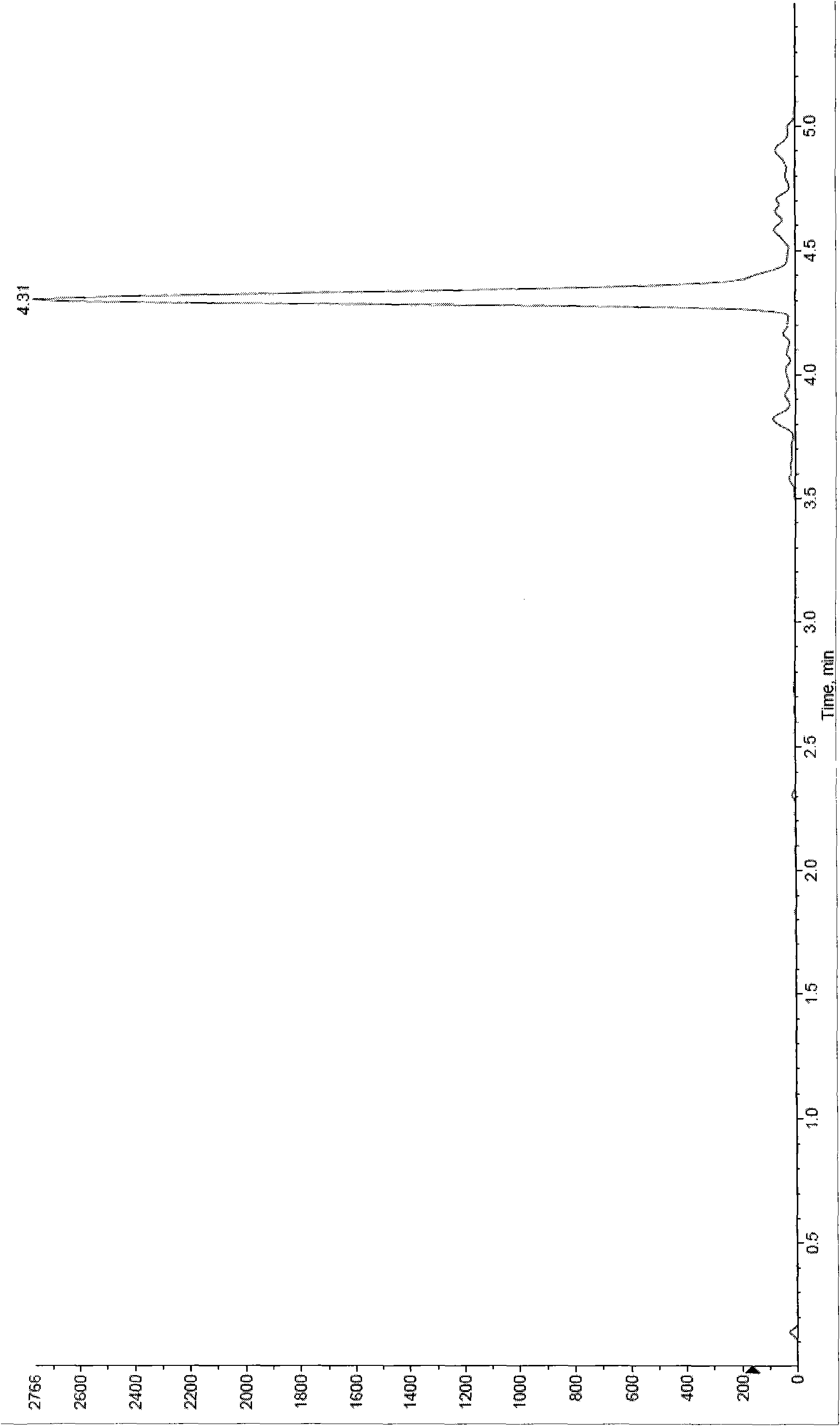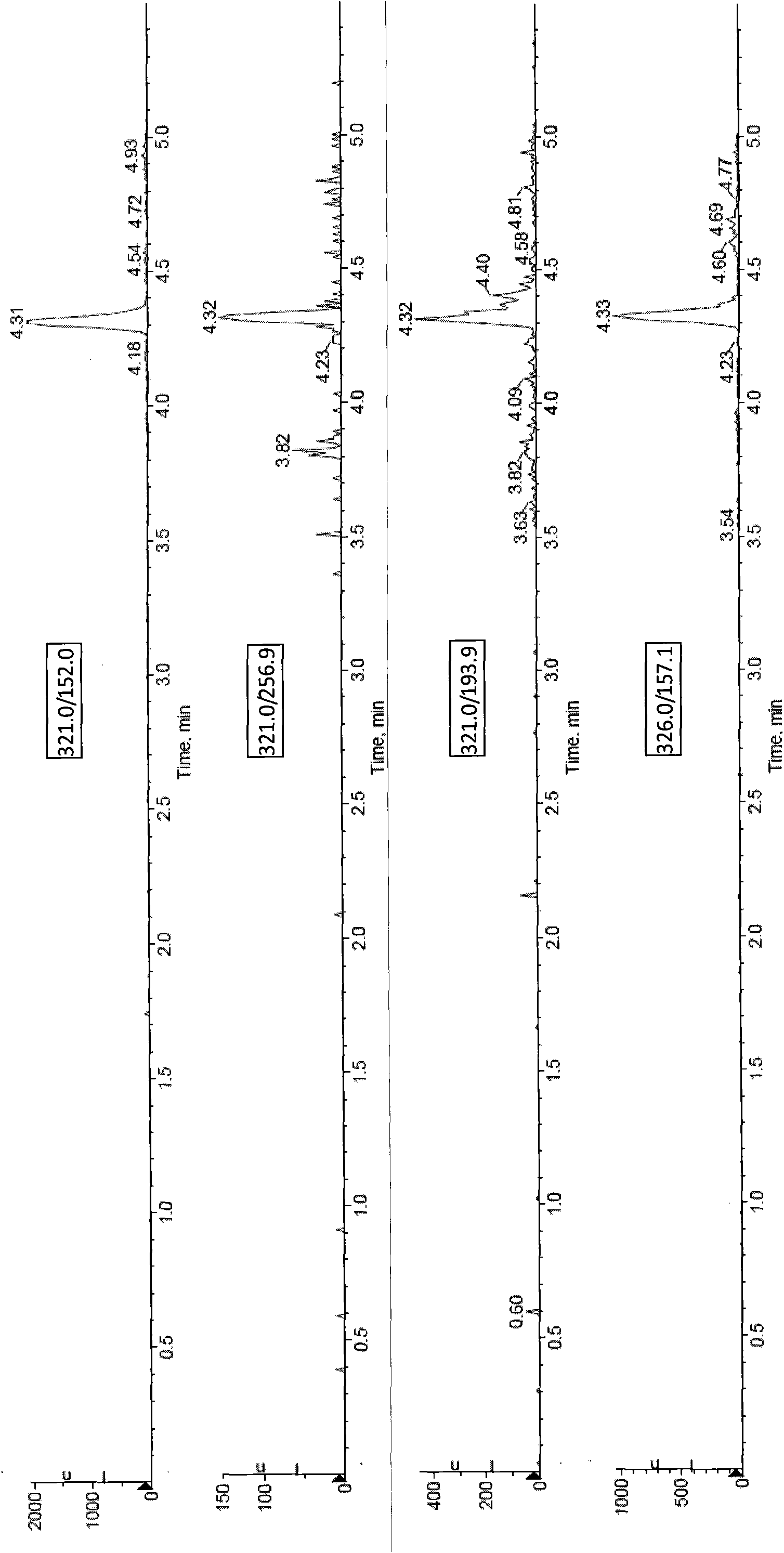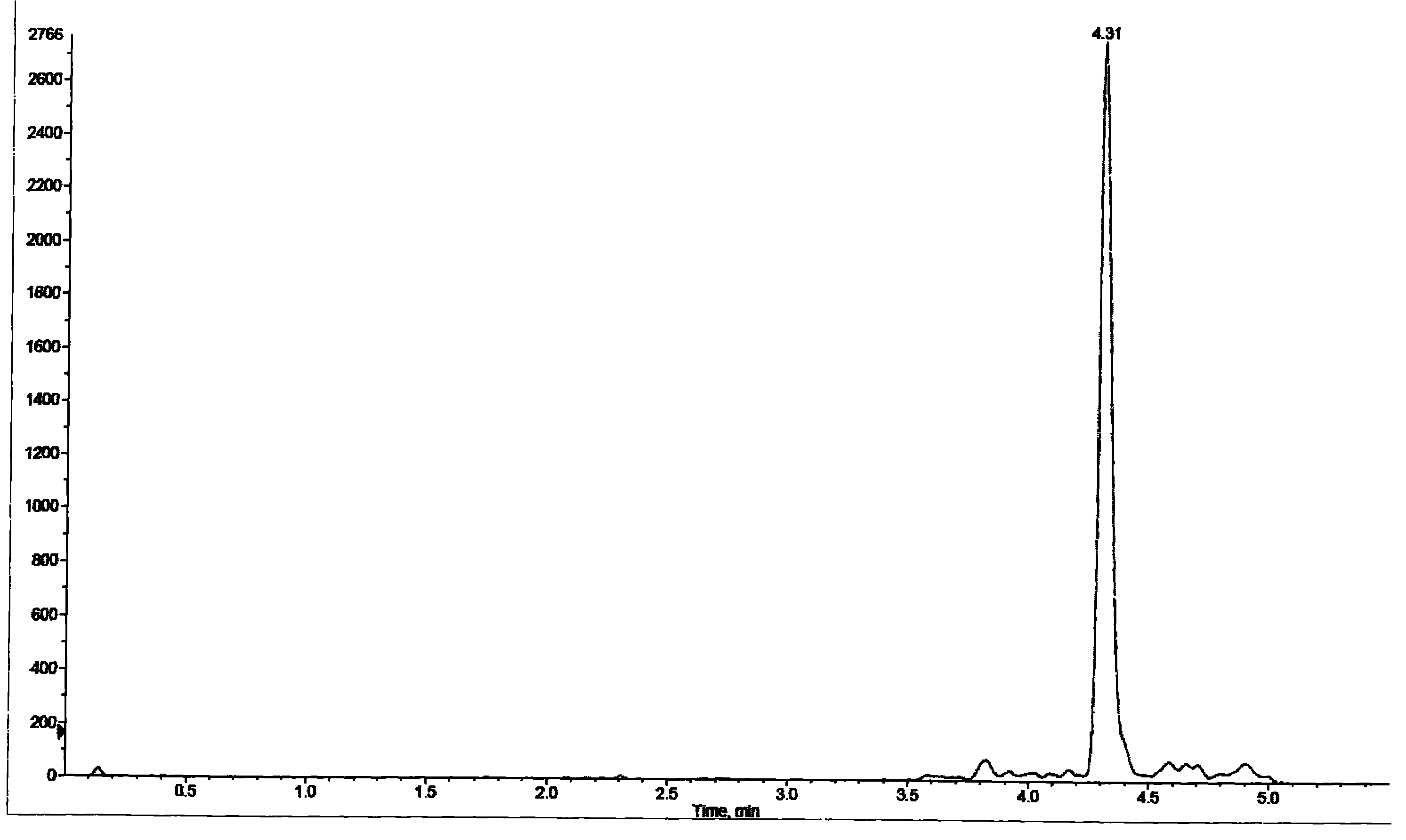Method for measuring residual quantity of chloramphenicol in propolis by using high performance liquid chromatography tandem mass spectrum
A technique of high performance liquid chromatography and tandem mass spectrometry, which is applied in the field of determination of chloramphenicol residues in propolis, can solve the problems of different sample purification levels, low detection cost and high detection efficiency, and achieves reduction of sample matrix interference, good precision, Optimizing the effect of the liquid phase
- Summary
- Abstract
- Description
- Claims
- Application Information
AI Technical Summary
Problems solved by technology
Method used
Image
Examples
Embodiment
[0022] see figure 1 with figure 2 In this embodiment, the method for determining the residual amount of chloramphenicol in propolis by high performance liquid chromatography tandem mass spectrometry includes a standard solution preparation process, a standard curve preparation process, a propolis sample solution preparation process and a chloramphenicol residual detection process.
[0023] The raw materials used in this embodiment include water, chloramphenicol standard substance with a purity greater than 99.0%, and a concentration of 100 mg / l all from D5-chloramphenicol standard substance of Dr. Ehrenstorfer Company in Germany, which is ethyl acetate of pesticide residue grade , for analytically pure sodium hydroxide, methanol, sodium chloride and anhydrous sodium sulfate, for superior grade pure n-hexane and formic acid, for liquid chromatography pure acetonitrile and ammonium acetate, propolis samples to be detected. The water used therein is double distilled water.
[...
PUM
 Login to View More
Login to View More Abstract
Description
Claims
Application Information
 Login to View More
Login to View More - R&D
- Intellectual Property
- Life Sciences
- Materials
- Tech Scout
- Unparalleled Data Quality
- Higher Quality Content
- 60% Fewer Hallucinations
Browse by: Latest US Patents, China's latest patents, Technical Efficacy Thesaurus, Application Domain, Technology Topic, Popular Technical Reports.
© 2025 PatSnap. All rights reserved.Legal|Privacy policy|Modern Slavery Act Transparency Statement|Sitemap|About US| Contact US: help@patsnap.com



